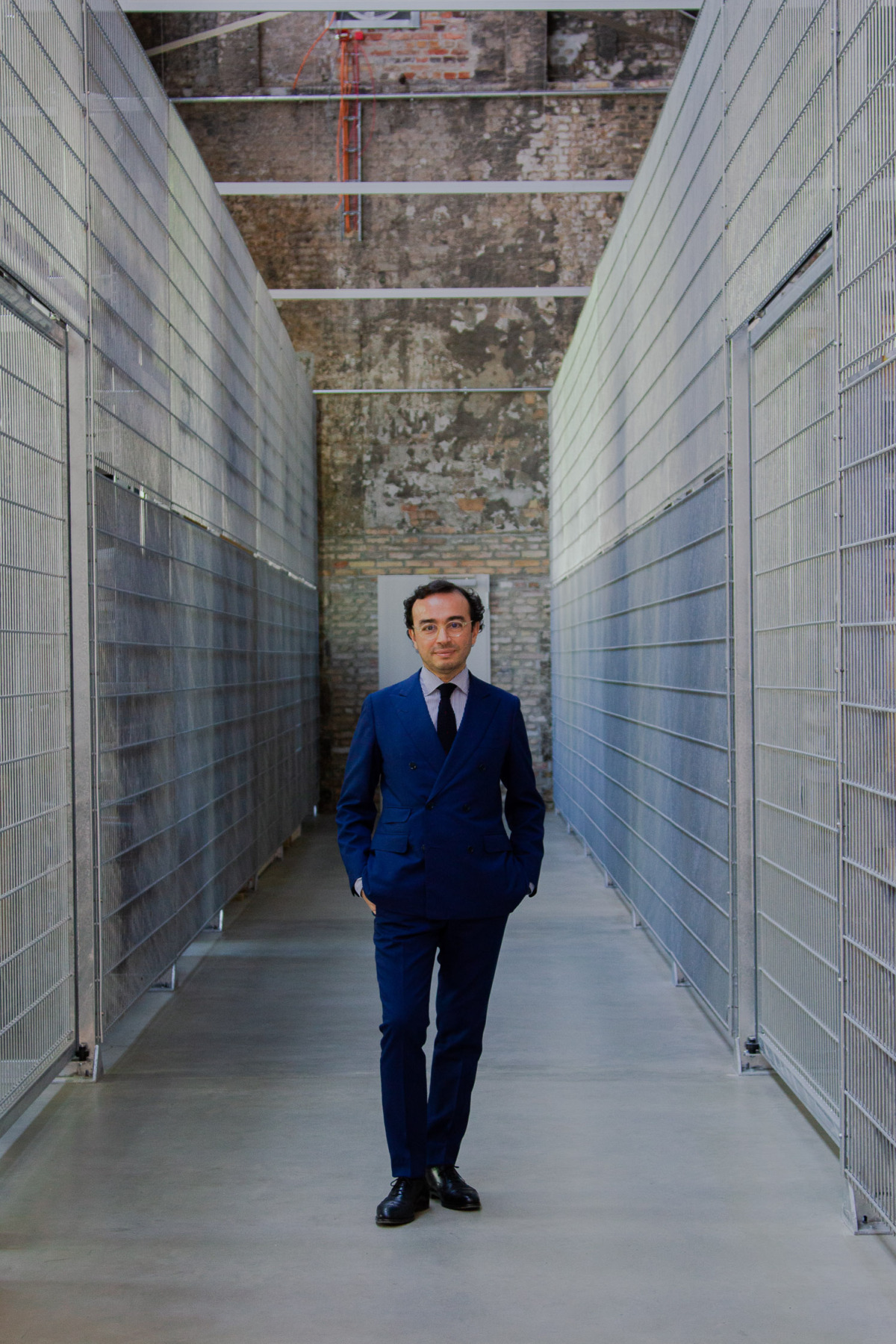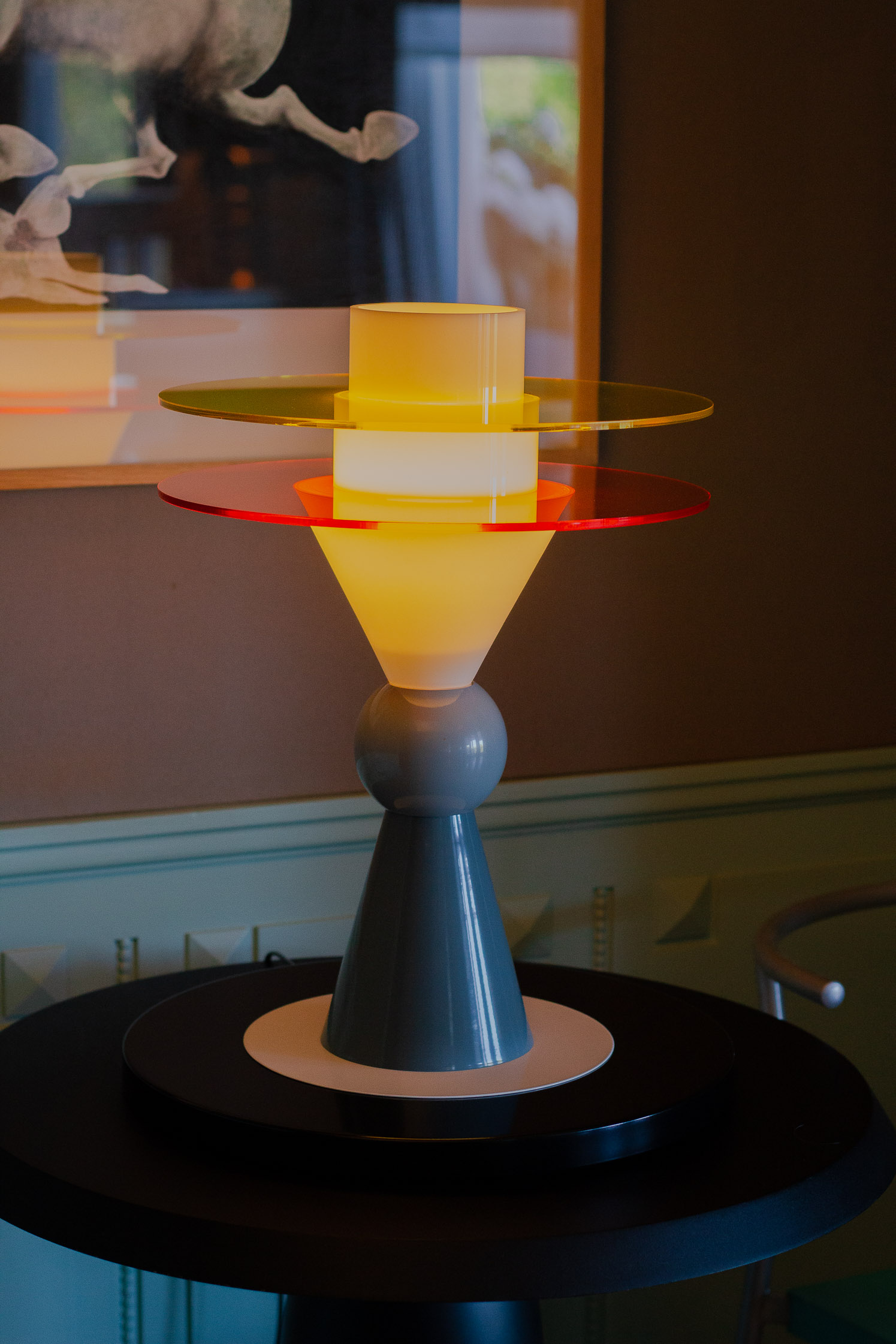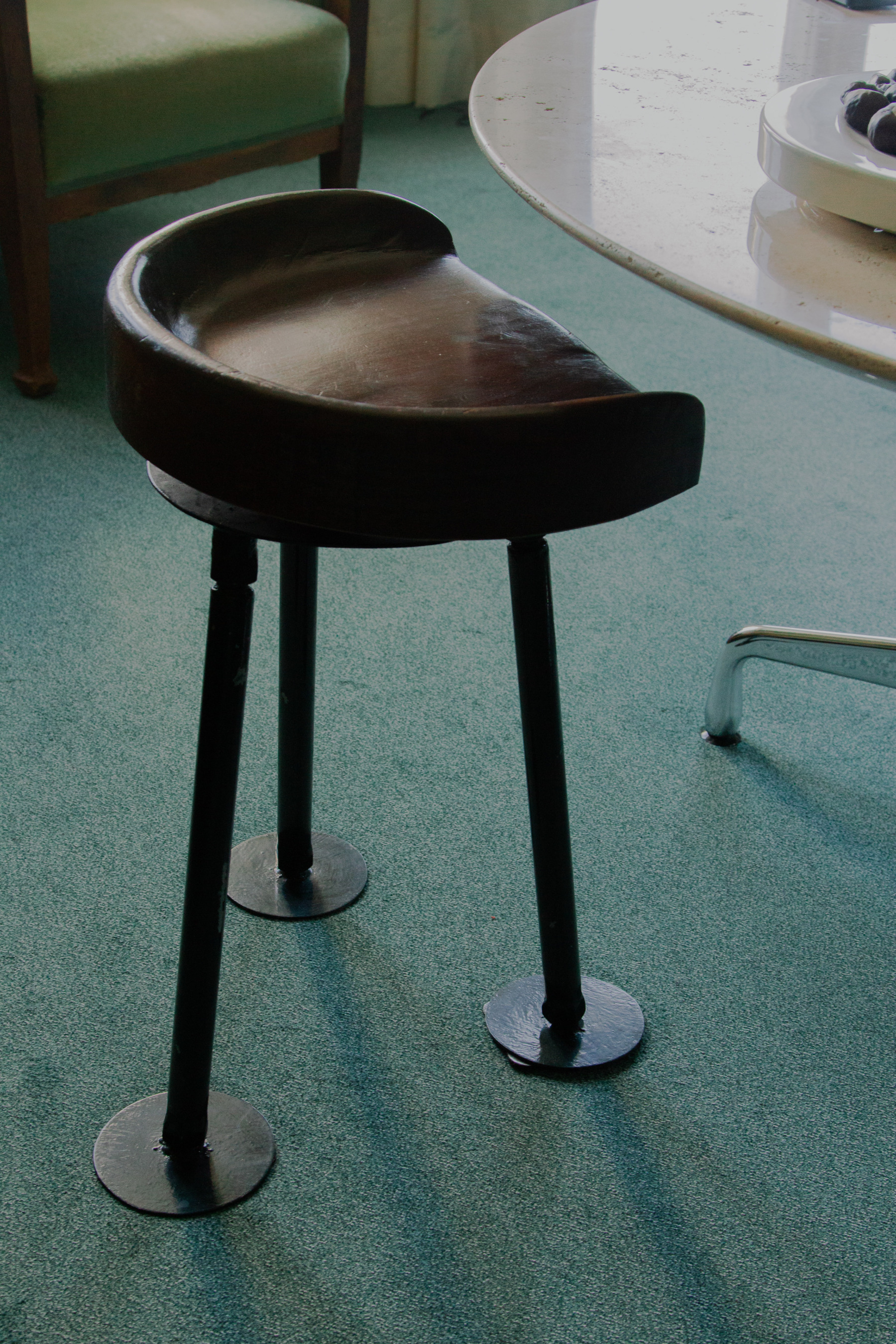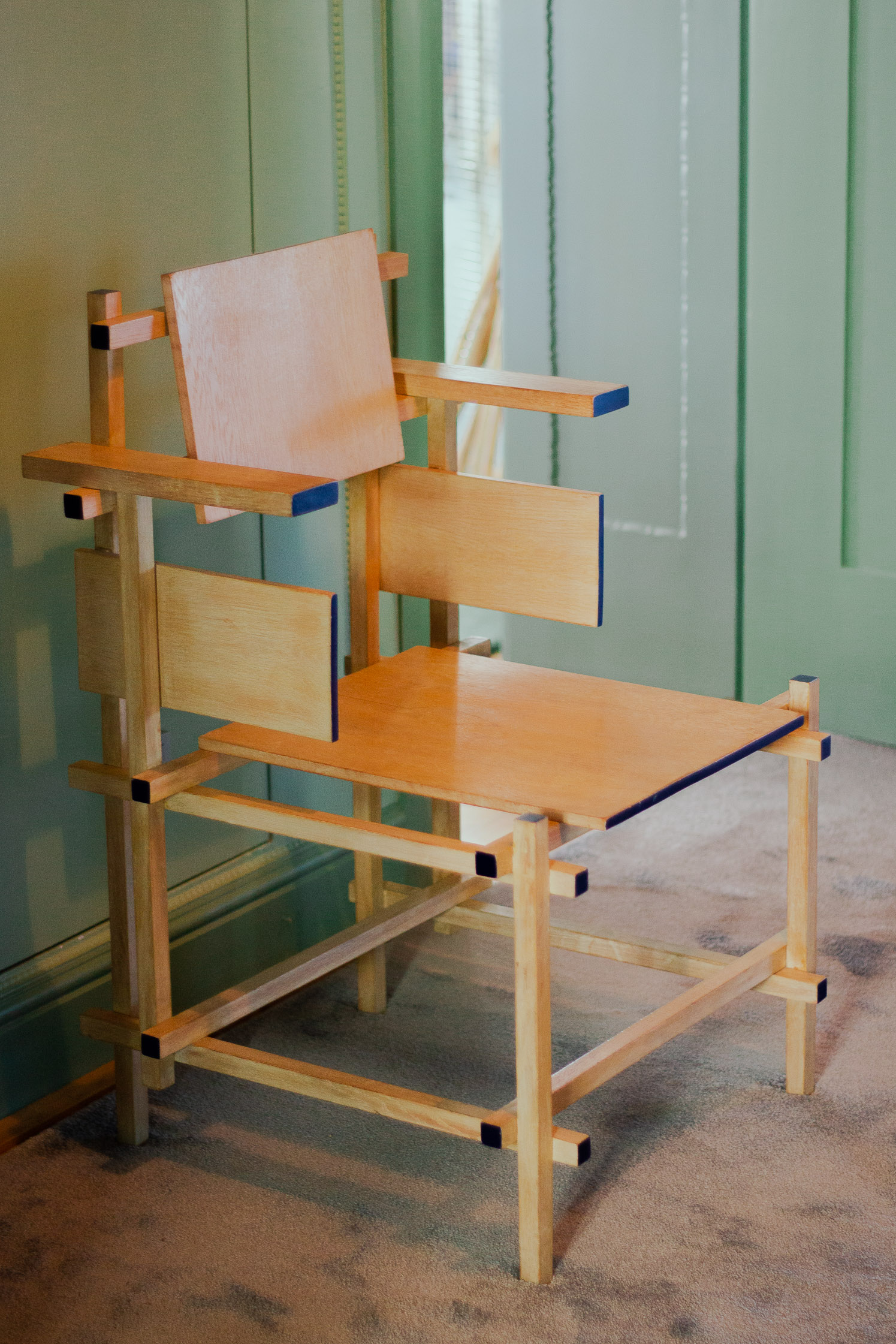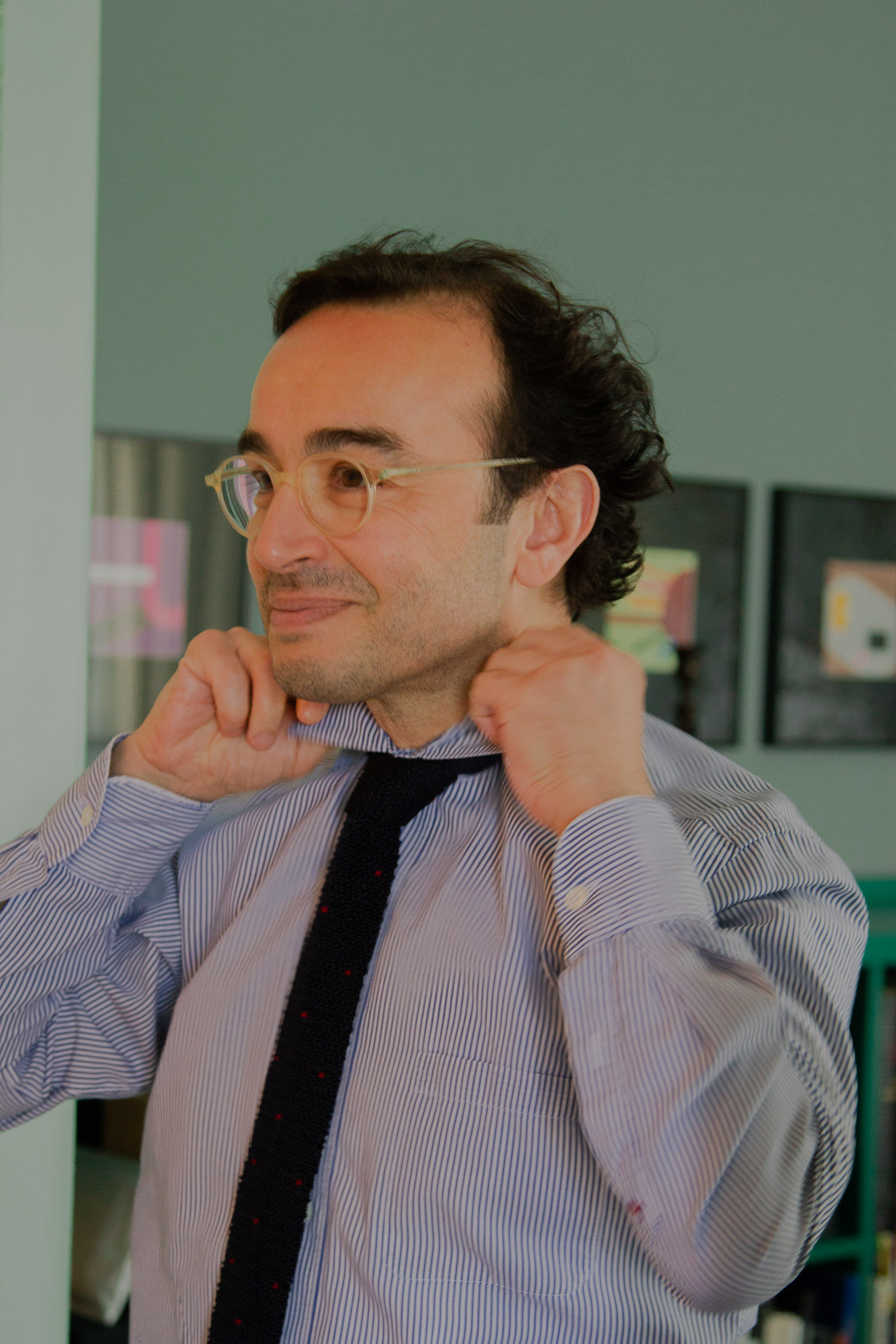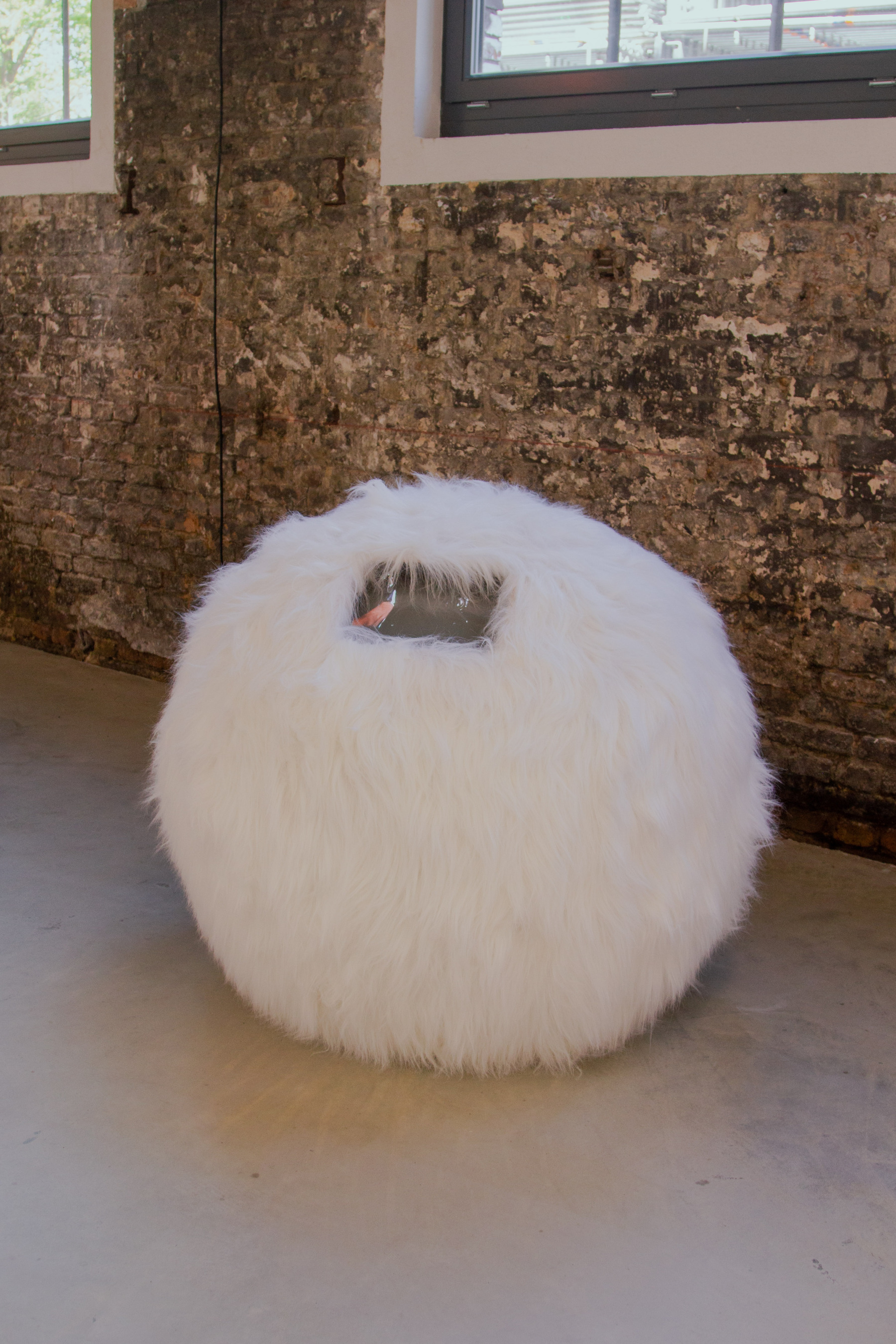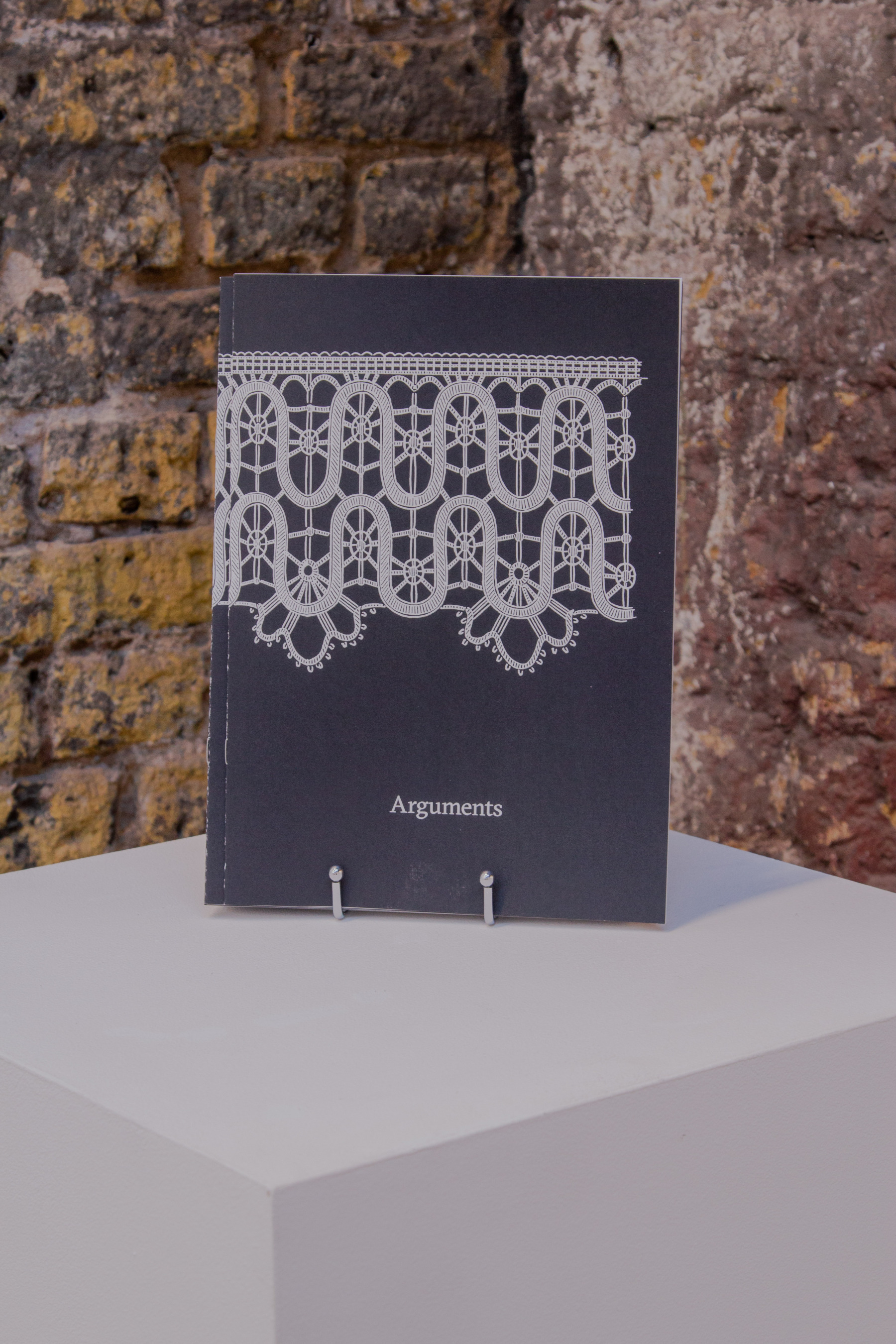Gallerist Mehdi Chouakri has been a distinctive figure in the vibrant Berlin art scene for over twenty years. Since his arrival in the German capital in 1996, Mehdi has carved a path as a dynamic and adventurous creative, transforming spaces throughout the city and working with artists that err on the side of unconventional and larger-than-life, many of whom consider Galerie Mehdi Chouakri to be their main base in Germany. We spent a day alongside Mehdi and journeyed throughout the spaces he has made his own in the city, from the effusive charm of his home to the grand, industrial hall of his latest gallery space in North West Berlin.
Galerie Mehdi Chouakri on Fasanenplatz’s exterior is crisp and smooth, and just above the entrance lies a sculpture of the glasses Mehdi himself wears: thin, delicate, round-framed spectacles in an understated silver. All around, Summer is being beckoned into the city by the sweeping arms of the trees that line the streets. Every borough of Berlin holds a unique and distinctive character, and this part is enchanting in its simplicity. This space was opened in 2017, and Mehdi notes the great importance of connecting to the area through the building: “…it was important to have windows because a lot of people live here. It’s a very residential area. We wanted to interact with the area, with the visitors and neighbors.” The expansive windows that line the gallery invite curious gazes and give a sense that the interior cohabits with the outside environment.



From speaking with Mehdi, it’s apparent that his approach to inhabiting space is as respectful as it is discerning. In moving to Fasanenplatz, he made it a priority to join the area authentically and openly. Not trying to blend in, shutter out, or disrupt, but instead joining its unique tapestry using the same needle technique. It mirrors how he speaks about the interior design of his apartment: “The building is from 1910, and it still has a very specific, simple style, even if it has modernized. You’re dealing with style and adapting from that period.”
Mehdi’s original ambition was to become a designer. Born and raised in Algeria, he finished his schooling and, at eighteen, moved to Paris to study art. The exposure to contemporary art and his time spent delving into art history shaped his aspirations. When he met Swiss artist Sylvie Fleury (with whom he would continue to collaborate throughout his career) at the Venice Biennale, “I already knew her as an artist and appreciated her work. We got to know each other and I worked for her as an assistant in Paris for an exhibition in a gallery.” He was splitting his time between Paris and Berlin at the time, and through this experience, his resolve to open a gallery was strengthened.
Berlin has long been associated with creatives, emerging talents, and edgy, genre-defying artists. Mehdi recalls a letter he wrote to his mother in 1994—“There were no emails yet”—describing his affinity for the city, and his desire to live there: “I told her that if I could have the opportunity, I would love to move to Berlin. I really had a feeling that it was an open field and open city. Everybody’s welcome to be here.” It was a mere two years later that he began his career as a Berlin-based gallerist. He goes on to reminisce, “The city welcomed everybody. And everybody was happy to do something. Small action or big projects, everybody had an opportunity to be very active.”
“The city welcomed everybody. And everybody was happy to do something. Small action or big projects, everybody had an opportunity to be very active.”
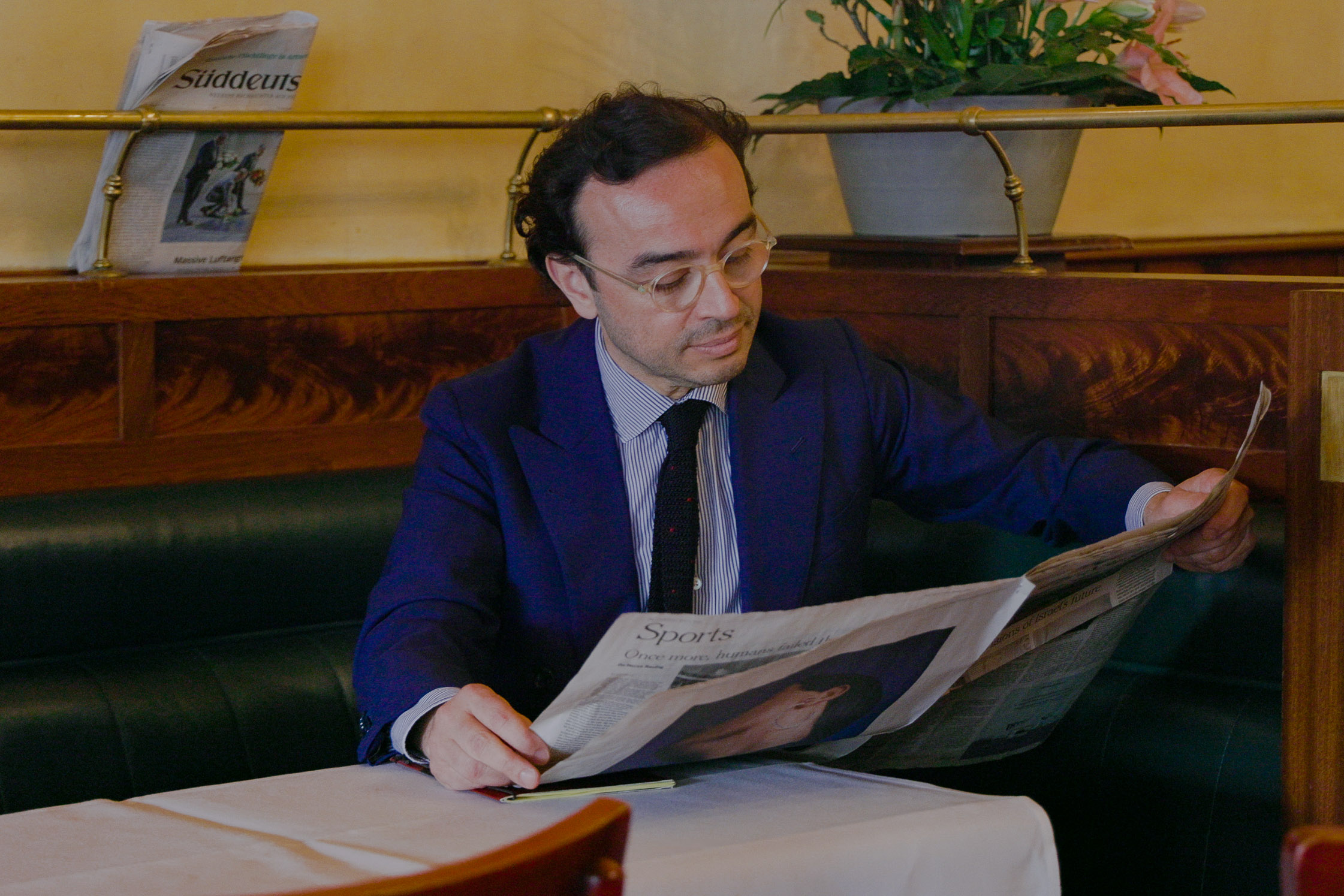

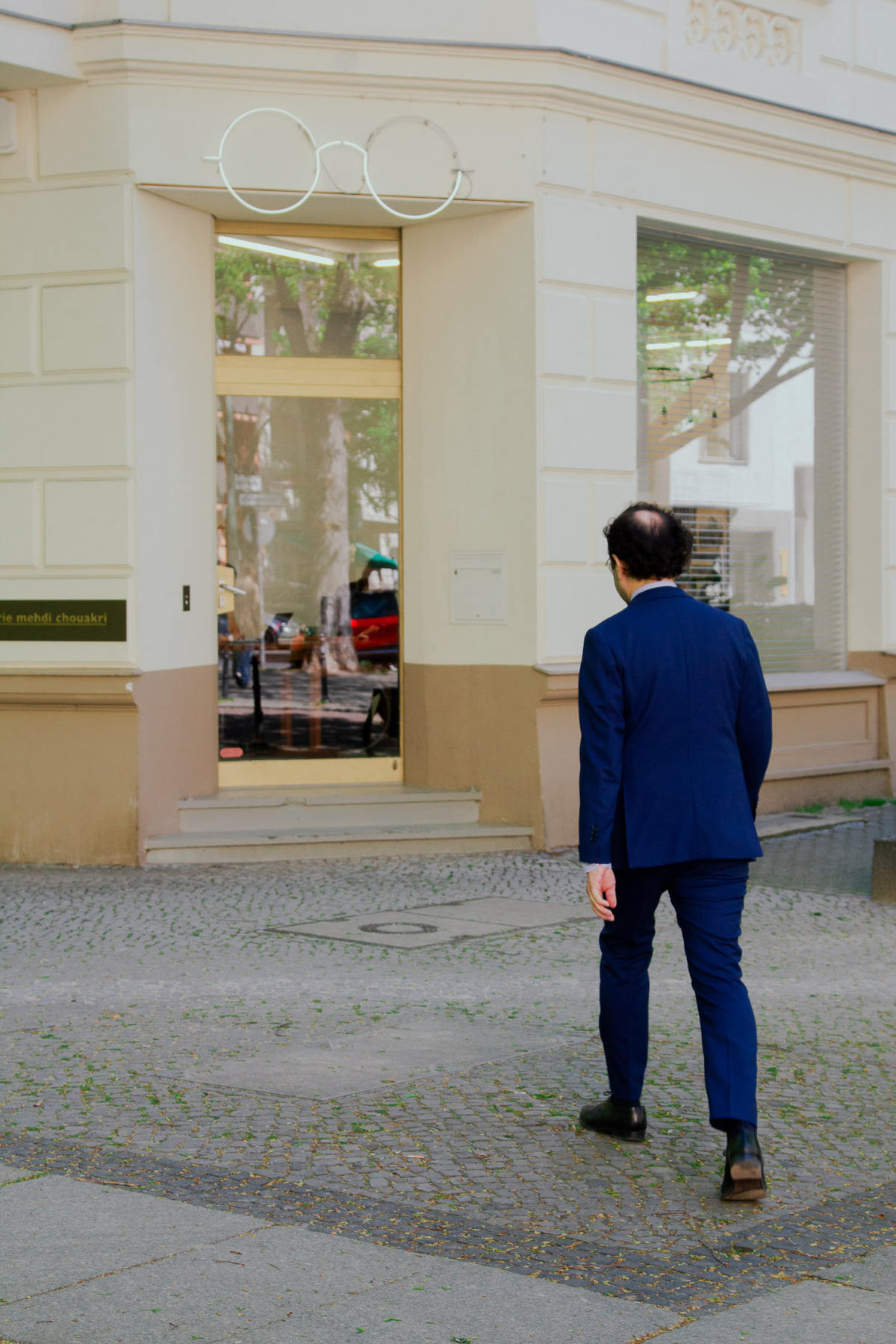
Spanning twenty years in Mitte, and then moving to two new spaces in West Berlin in 2017, and opening a large industrial-hall space in North West Berlin in 2022, Mehdi is privy to the nuances of change in the Berlin art scene—driven by the change in Berlin as a whole. “The city changed, and so the art scene changed in exactly the same way,” he says. “I remember arriving in Berlin and [it was a] forgotten kind of city in a way. There is still a sort of roughness, which I kind of appreciate more. The city has a nonseptic quality.”
Mehdi’s Berlin home is a treasure-trove for a purveyor of design, the sort of wonderful, truly idiosyncratic space that would not be amiss on a movie screen. The colors are bright but tasteful—cobalt, cerulean, and seaweed against cool, soothing neutrals.
“We love chairs,” he says, which is made clear by the collection he hosts in his apartment, made up of many different designs and aesthetics. “We have some from early nineteenth-century France, some Eames designed chairs, some from unknown designers. Some have been custom-selected with the intent for redesign.” The collection of chairs (including Eames and Fabula) isn’t the only sign of Mehdi’s enthusiasm for masterful, attuned design. All throughout the apartment are pieces that showcase a keen interest in and sense for culture, history, and contemporary art. There are old sculptures originally from China, vases from the 1950s, shelves crammed with books and magazines. “We’re not into one period of time. It’s pretty eclectic.”


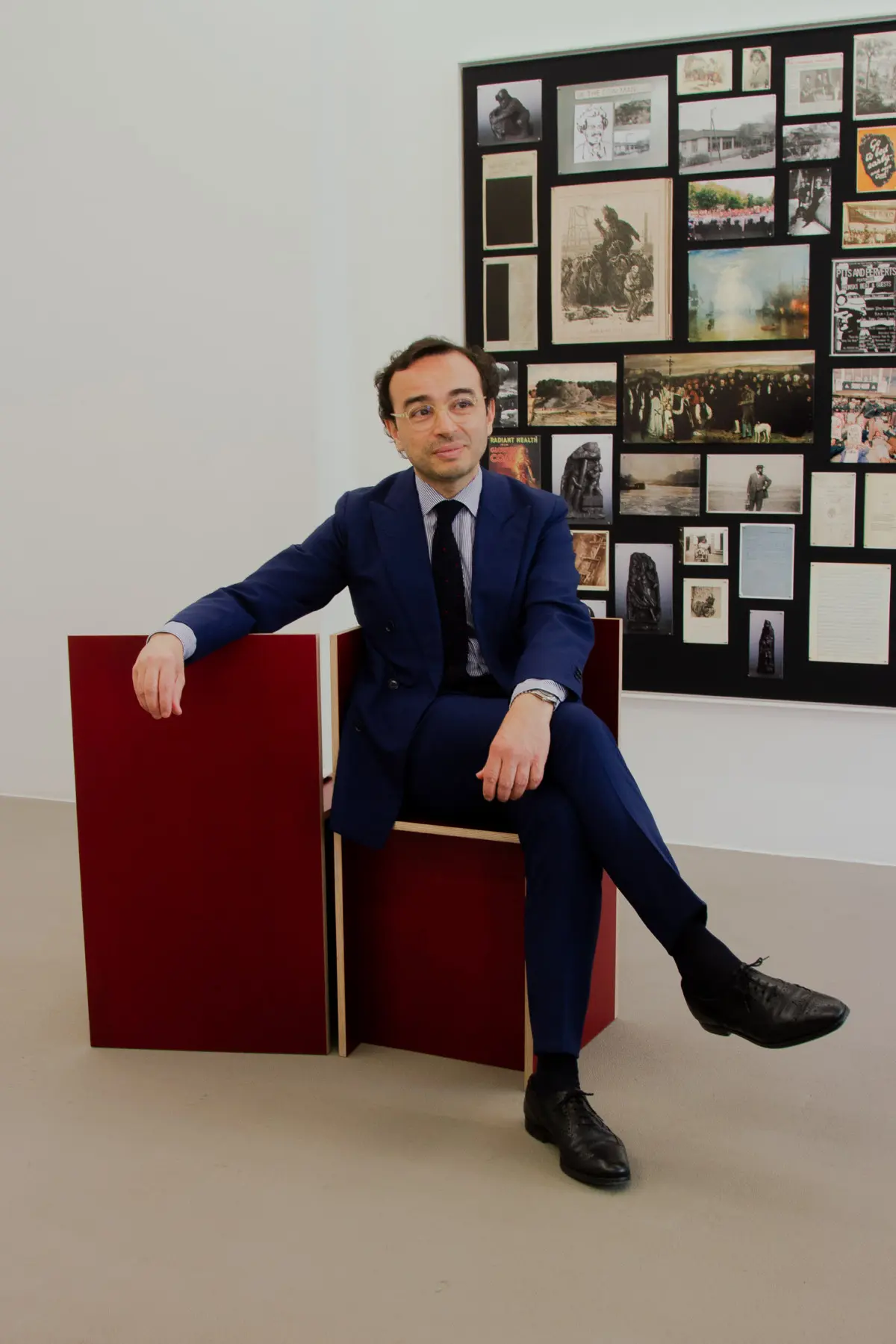

“I remember arriving in Berlin and [it was a] forgotten kind of city in a way. There is still a sort of roughness, which I kind of appreciate more. The city has a nonseptic quality.”
It’s eclectic, but also crafted with a palpable sense of care. One particular room in the apartment, “a novel room”, is being covered wall-to-wall with a mosaic mirror, an artwork by Swiss artist John Armleder: “Imagine a 360 degree mirror, made of mosaic. So you have infinite reflection and atomization of all that’s being reflected by the light.”
The concepts at the heart of his origins as a gallerist and design lover remain as important to him today. “When I opened the gallery I had special, specific ideas conceptually.” The exhibitions shown in his spaces and those he collaborates with are larger-than-life installations, grand sculptures, extensive collections from artists that work in fields not directly connected to art. “It could be architecture, gender, fashion, movies, design…all these artists would take these influences, and put them into their artwork.” Mehdi’s galleries seem to thrive specifically on the unconventional, the daring, and, above all, the honest. When collaborating with artists or showcasing work, he stresses the importance of a genuine, truthful relationship “on both sides”—from that of the gallerist and the artist.



The latest Mehdi Chouakri gallery space, at Wilhelm Hallen, was not initially intended to be for galleries. “It was during COVID, it was 2020,” he recalls. “I realized we had too many storage places and two exhibition spaces. And I thought, okay, [Wilhelm Hallen] would be the perfect place for the storage. And then I realize it’s such a beautiful place that it can’t just be storage, it has to be something else.” Tucked in the North West of Berlin, away from the densely-populated inner city, Wilhelm Hallen was just about as different from Mehdi’s previous gallery spaces as one could get. Ever prepared for a challenge, Mehdi gathered his team “to rethink what a gallery could be.” The expansive, open space was fertile ground for three exhibitions, spread throughout the interior and structured separately. “The trip out of the city is worth it,” he says, of the commute to the threshold of Berlin. “It’s almost like a museum, what we are doing there. It’s important.”
When it comes to taking risks or an unorthodox approach, Mehdi is usually game. His career seems to be imbued with a strong and unfettered sense of willingness to try new things. Sifting through the years he’s worked as a gallerist, he names an abundance of shows with fondness; he speaks of turning one of his galleries into a travel agency for a brief period, acting as an agent selling trips himself. Another time, people gathered for an opening that consisted of the gallery itself being closed: “I was on vacation, and it was the project of the audience.”

“Learning has changed. It’s filtered through other materials and other media. This makes the art world and art market change as well.”




Mehdi’s understanding of the art world is rooted in understanding its pliability. Charting its future is not a precise formula. He notes the changes that he has already witnessed in recent years, largely due to the popularization of artificial intelligence: “The words artists use have already changed, according to this change in knowledge. It’s the entire society. Learning has changed. It’s filtered through other materials and other media. This makes the art world and art market change as well. One has the feeling that Instagram is more important than an art magazine. That’s life, that’s how it is. It shows how people learn about artists. And it shows you that you have to be as flexible as possible, and less dogmatic as well.” This need to be receptive to the fluidity of the art world can be difficult to balance alongside the commercial realities of being a gallery owner. For Mehdi, it’s made simpler by the fact that the commercial perspective is not his priority, and not what decides his exhibitions. The choice for what he shows, and for whom he works with, is led ultimately by what excites and speaks to him. “We don’t say, ‘I’ll do this show, because I know I’m going to sell this.’ I do the show because I like the artists, I appreciate the artists, and I respect the artists. I appreciate and respect their work. That’s the way I do it. And then I promote my enthusiasm and the quality of the work the artists did, in order to place the work in an institution or private collection. This is my aim. That’s the way I believe my gallery works.”
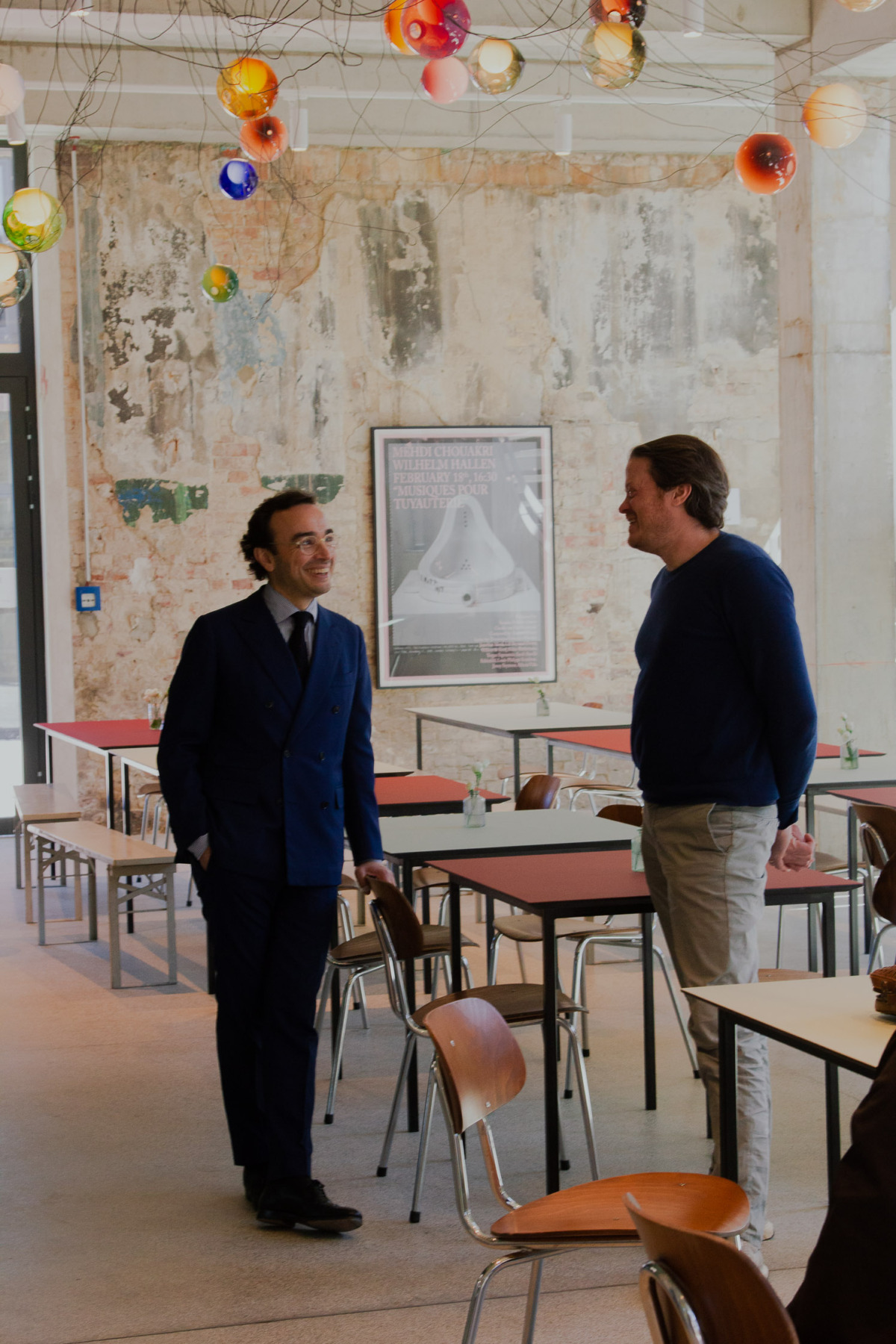
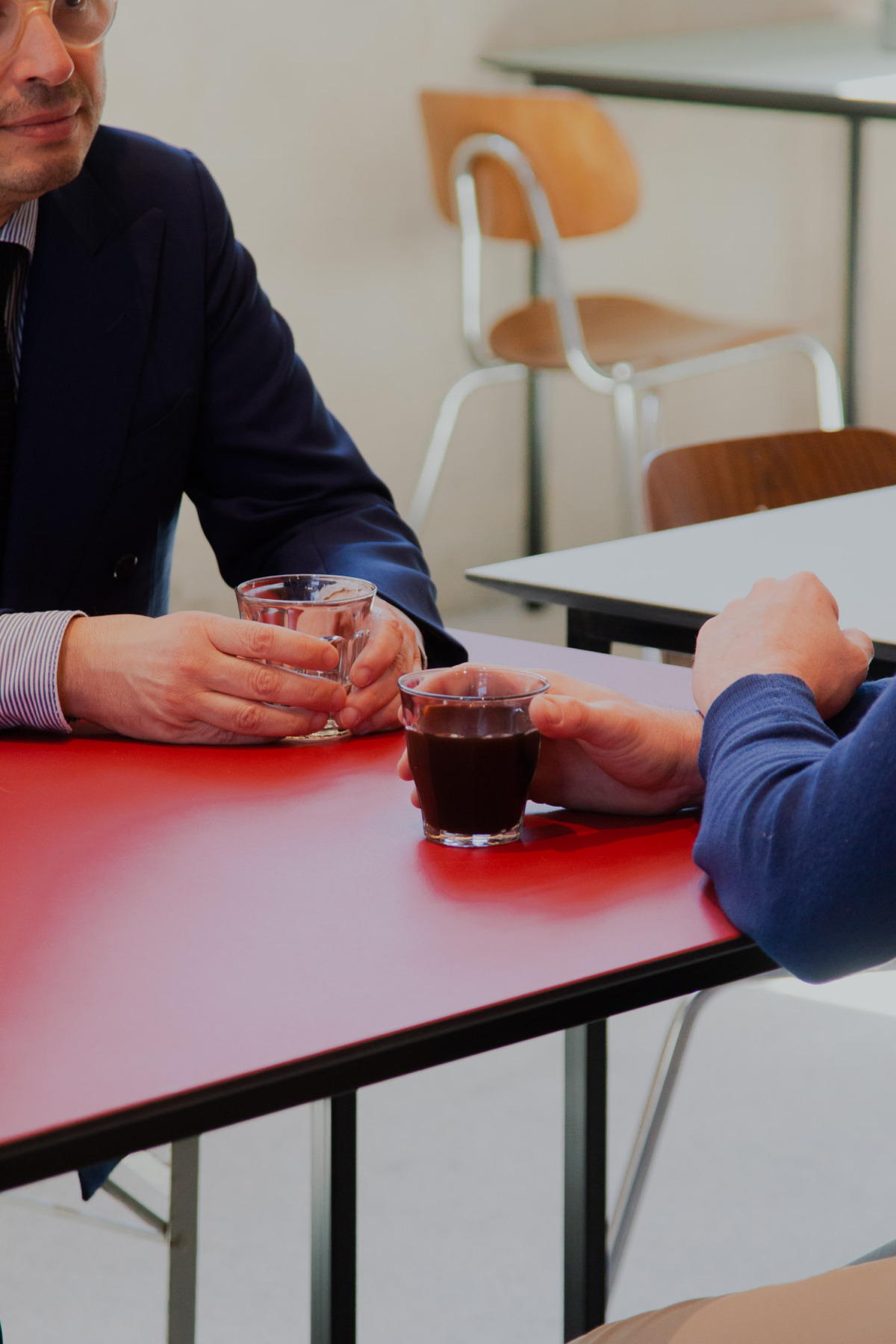
Mehdi Chouakri is a gallerist who has worked with artists such as Johanna Dumet, Sylvie Fleury, Mathieu Mercier, and Gerwald Rockenschaub. First opening a gallery space in Berlin Mitte in 1996, Mehdi would be considered part of the first generation of Berlin’s new gallery scene.
After twenty years in the Berlin Mitte district, Mehdi opened two new galleries in 2017, in West Berlin. In 2022, the latest of his exhibition spaces, an industrial hall at Wilhelm Hallen, was opened. The gallery continues to represent and collaborate with artists from all over the world.
Text by Ellen McBride
Images by Lucy Pullicino
